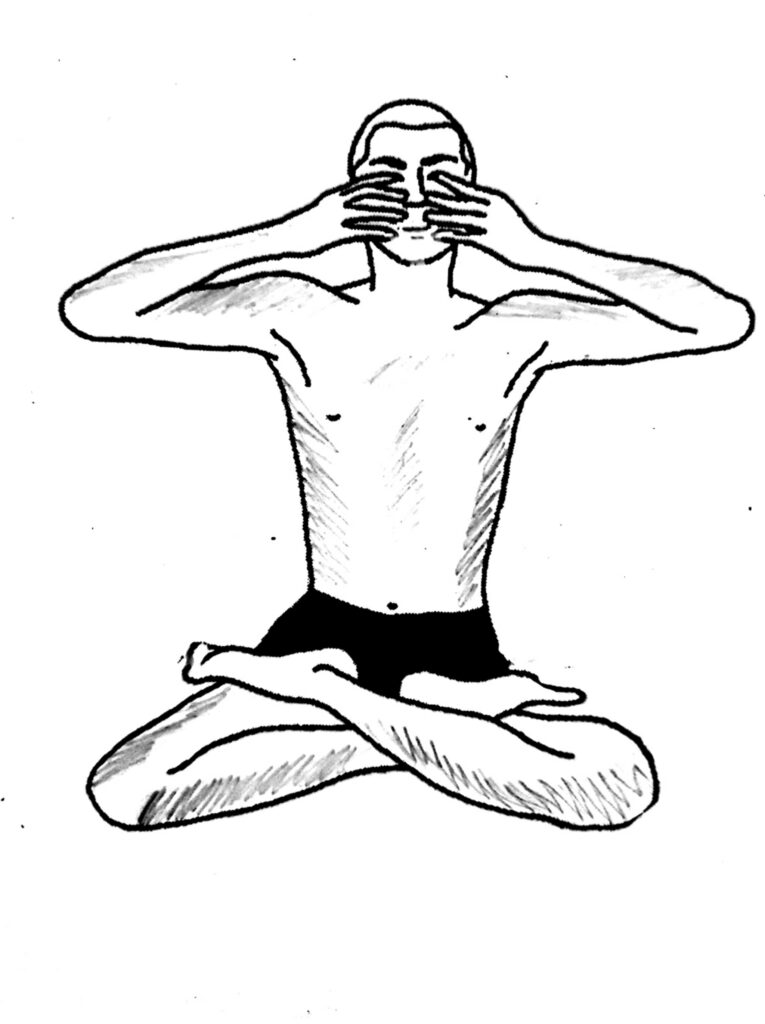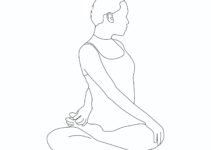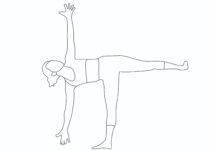What is the meaning of Bhramari Pranayama?
The word Bhramari is derived from ‘Bhramara’, which means a black humming bee. While practising this Pranayama, a person makes a humming sound through the nostrils; this sound resembles the buzzing of a black bee and is named Bhramari. With daily practice of this breathing yogic exercise, the person hears in the right ear various sounds such as the sound of crickets, flute, thunder, drum, beetle, bells, gongs of bell-metal, trumpets, etc. and lastly, anahatarising from the heart heard. With this sound, it blends an internal aroused light. In that light, the mind disappears and achieves the highest stage of yoga described as ‘Parampada’. Bhramari praṇayama should be practised thrice a day, according to Rishi Gheraṇḍa (Gheraṇḍasamhita, 5/77). In the article, easy steps, potential benefits and contraindications have been mentioned.

Bhramari Pranayama, as per yogic texts
- According to Gherandasamhita, a text on Yoga describes Bhramari as inhalation and suspension of breathing after closing the ears with hands.
- According to Haṭhapradīpikā, in Bhrāmarī, bhraṅganāda (sound of male bee) is made during Pūraka and bhriṅgināda (sound of female bee) during Rechaka.
How to do Bhramari Pranayama
The step-by-step technique of practising Bhramari pranayama is as follows:
- Sit in any comfortable sitting position.
- Close the eyes; keep the mouth closed and inhale deeply.
- While exhaling, make a soft humming sound.
- This is the one round. Make four rounds.
- This is the simplest version of Bhramari pranayama.
Advanced version of Bhramari pranayama
- Sit in any comfortable posture with eyes closed.
- Inhale deeply through the nose.
- Close the eyes with index fingers, place the middle finger side of the nose, mouth with ring and tiny fingers, and ears from respective thumbs.
- Exhale slowly in a controlled manner by making a humming sound like that of a black bee.
- This is the one. Try to practice it for 3-5 rounds.
8 wonder health benefits of Bhramari pranayama
- Alleviates anxiety: The practice of this pranayama is a great stress buster. Thus, it plays a vital role in combating anxiety, anger, and hyperactivity. Also, please take a look at Natural tips to relieve pressure.
- Combat stress: It has soothing effects on the mind. The practice of this pranayama has mild effects on the body and mind, thus providing adequate positive impacts on the nervous and muscular systems, therefore beneficial in the prevention and management of stress.
- Helpful in meditation: It is one of the essential breathing practices that is good for the preparation of meditation or dhyana.
- Memory and concentration: The regular practice of the pranayama is good for enhancing memory and concentration.
- Lead you to Samadhi: It takes consciousness inwards and facilitates the practice of samadhi. However, it is not for the general public. If somebody wants to go to the higher stage of yoga, this pranayama can act as a ladder.
- Mind relaxation: If you practice bhramari pranproperayama with the proper practice and technique, it will help you with great relaxation, especially for mind soothing.
- ENT health: It is suitable for the overall health of the ear, nose, and teeth region as the humming sound of the pranayama has therapeutic impacts on the ENT region and helps improve blood supply to the brain.
- Increases oxygen flow: The pranayama helps to provide sufficient oxygen to the entire body and helps to carry energy to cells and tissues.
Precautions of Bhramari pranayama
- The pranayama should be avoided if somebody has an ear infection.
- People suffering from heart diseases should practice it without kumbhaka.
What is the best time to practice Bhramari pranayama?
The best time to practice Bhramari pranayama is late at night or early in the morning because, at this time there are fewer external noises that would interfere with internal perception. However, this time is inconvenient for most people; therefore, you can choose any suitable time when the surroundings are peaceful.





